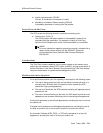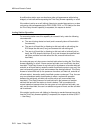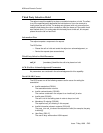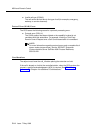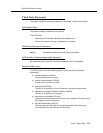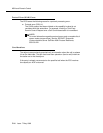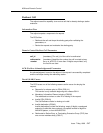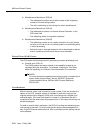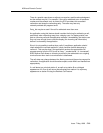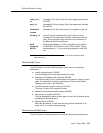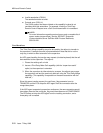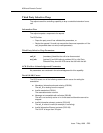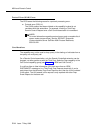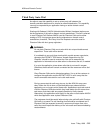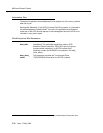
ASAI and Domain Control
Issue 7 May 1998
5-19
There is a special case where an adjunct can receive a positive acknowledgment,
but the redirect may fail. For example, if the call is redirected to an off-premises
number and the network trunk is seized, the ECS considers this successful
redirection and drops the redirecting party. The caller may hear any
network-provided call progress tones.
Party_ids may be re-used if the call is redirected more than once.
An application using this feature should consider the timing for redirecting a call,
particularly when redirecting away from a display user. If a display station user
gets an incoming call and the application redirects it immediately, the station user
may not have enough time to read the display (the incoming call information)
before it is cleared by the application.
Since it is not possible to redirect busy calls, if possible an application should
check whether the call had resulted in a busy condition before attempting to
redirect it. This may be done if the application receives the appropriate call
progress events from the ECS (such as “busy,” “reorder/denial,” or “connected”).
ASAI Redirect Call allows an incoming trunk call to be redirected to an outgoing
trunk call even when trunk-to-trunk transfer is disallowed.
The call state may change between the Alerting event and the service request for
redirection. An application should therefore expect certain NAKs and handle them
appropriately.
If a call alerts to a principal station A, as well as to station B as a bridged
appearance of A, then a call cannot be redirected from station A to a primary
appearance on station B using the Redirect Call Feature.



